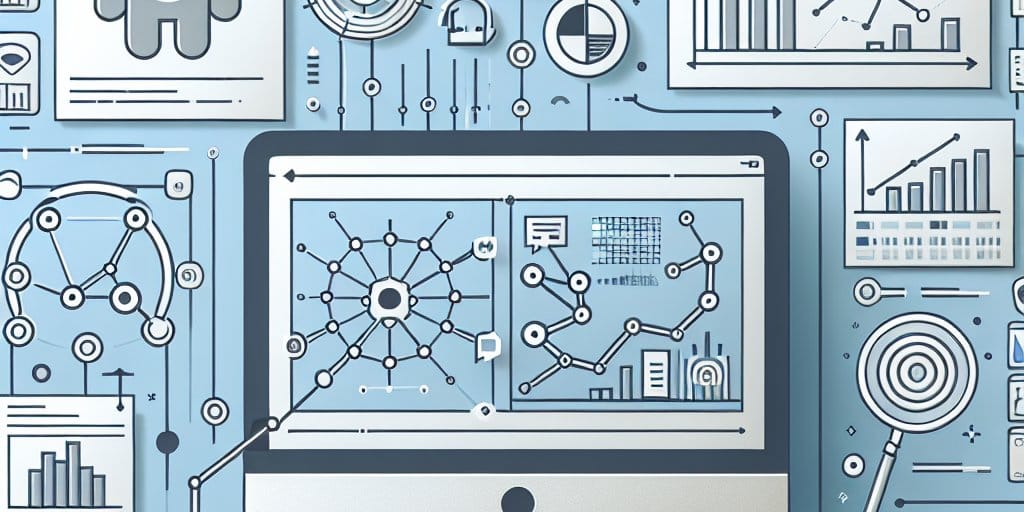Predictive Analytics in Marketing: How AI Forecasts Behavior in 2025
As we edge closer to 2025, the integration of artificial intelligence (AI) in marketing strategies is evolving from a competitive advantage into a core necessity. Predictive analytics, a branch of AI, is proving instrumental in decoding complex consumer behaviors and setting new benchmarks in personalized marketing. This post explores how AI-driven predictive analytics is reshaping marketing strategies by forecasting consumer behavior with unprecedented precision.
The Evolution of Predictive Analytics in Marketing
Marketing has always been about connecting with the audience at the right time and place. With the advent of AI, the ability to anticipate consumer needs and behaviors has transformed significantly. Predictive analytics uses historical data, statistical algorithms, and machine learning techniques to identify the likelihood of future outcomes based on patterns. This method is not new, but its application in marketing has spiked recently due to advancements in technology and data collection methodologies.
According to a recent study by Forrester, companies that embrace predictive analytics in their marketing strategies can improve their customer engagement metrics by up to 37% source. This statistic underscores the growing reliance on AI tools to not just interpret vast arrays of data, but to forecast future consumer actions and trends.
Key Applications of Predictive Analytics in 2025
Predictive analytics in 2025 spans various facets of marketing, from customer acquisition to retention strategies. Here are a few key applications:
- Customer Segmentation: AI algorithms analyze existing customer data to predict which demographic groups are most likely to purchase specific products or services. This allows marketers to tailor their campaigns more effectively.
- Personalization: By predicting what, when, and how consumers are more likely to make purchases, companies can craft highly personalized marketing messages. This not only enhances the customer experience but also boosts the effectiveness of marketing campaigns.
- Churn Prediction: AI can forecast the likelihood of customers discontinuing service or product use, enabling businesses to implement proactive strategies to retain them.
These applications are just the tip of the iceberg. As businesses continue to harness more sophisticated AI tools, the scope of predictive analytics will only broaden, making its integration an essential element for any successful marketing strategy.
Challenges and Ethical Considerations
While predictive analytics offers numerous benefits, it also comes with its set of challenges. Data quality and privacy concerns are at the forefront. With increasingly stringent data protection laws, such as the GDPR and CCPA, companies must navigate the legal implications of using consumer data for predictive analytics.
Moreover, there is an ethical dimension to consider. The accuracy of predictions and the potential for biases inherent in historical data can lead to discriminatory practices if not properly managed. It's imperative for companies to not only focus on the technological aspects of AI but also consider the ethical implications of its application in marketing.
Looking Ahead: The Future of Marketing with AI
The trajectory of marketing is leaning heavily towards automation and personalization, powered by AI. Predictive analytics is at the heart of this transformation, offering a glimpse into the future of consumer interactions. Companies that can successfully integrate this technology will likely enjoy a significant competitive edge.
As we look towards 2025 and beyond, the boundaries of what AI can achieve in marketing continue to expand. The integration of AI with other emerging technologies like augmented reality and the Internet of Things (IoT) is set to create even more dynamic and immersive consumer experiences. The potential for predictive analytics in such an ecosystem is vast and largely untapped.
"The future of marketing lies in our ability to predict the future — not merely react to it. AI gives us the tools to foresee, adapt, and engage in ways that were previously unimaginable."
Conclusion
Predictive analytics in marketing is more than just a technological advancement; it's a paradigm shift in how we understand and interact with consumers. By 2025, AI-driven marketing strategies will likely be the standard, not the exception. Marketers need to stay abreast of these changes to not only survive but thrive in this new data-driven era.
For more insights, explore our related articles on AI in Marketing, Data-Driven Marketing Strategies, and The Future of Digital Marketing.
What is predictive analytics in marketing?
Predictive analytics in marketing refers to the use of data, statistical algorithms, and machine learning techniques to identify the probability of future outcomes based on past data. This approach is used to forecast consumer behavior and improve marketing strategies.
How does AI help in predictive analytics?
AI enhances predictive analytics by providing more accurate forecasts and insights through advanced data processing capabilities and learning algorithms. This enables marketers to personalize campaigns and predict customer needs more effectively.
What are the ethical concerns associated with predictive analytics?
Ethical concerns include data privacy, the potential for biased outcomes based on historical data, and the transparency of AI processes. Companies must address these issues responsibly to maintain consumer trust and comply with legal standards.

